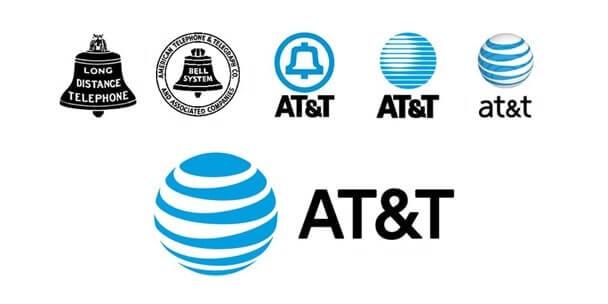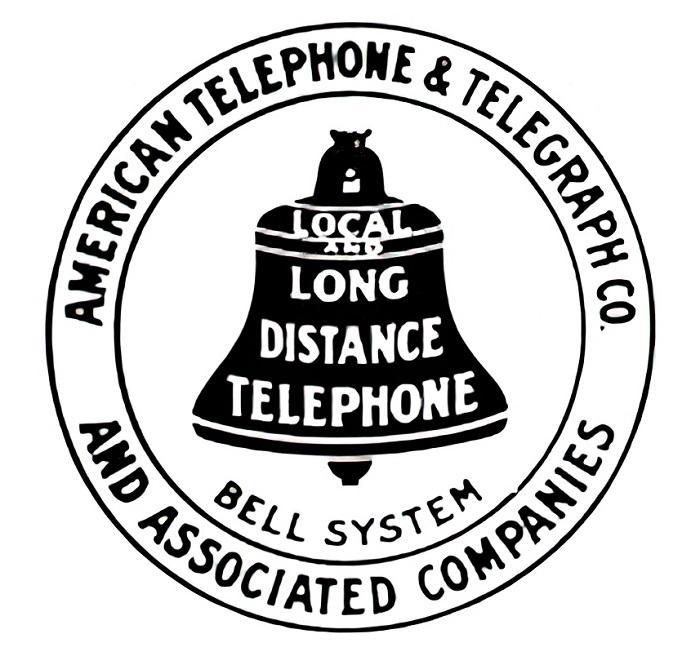The Early Years
The history of AT&T, the American Telephone and Telegraph Company, can be traced back to the invention of the telephone by Alexander Graham Bell in 1876. Bell, along with Thomas Sanders and Gardiner Hubbard, formed the Bell Patent Association to capitalize on the invention. In 1877, the three formed the Bell Telephone Company, with Hubbard as Trustee. By the end of that year, Mark Twain and President Rutherford Hayes became two of the first people to have a telephone, installed by the Bell Telephone Company.
As the Bell Telephone Company grew, it merged with smaller telephone companies and ultimately became the National Bell Telephone Company and then the American Bell Telephone Company. By the end of the 19th century, the company had become the world’s largest telephone company, and in 1899, it evolved into AT&T.
A Business Empire Emerges
AT&T’s early history was marked by its domination of the telephone industry in the United States. In the late 19th and early 20th century, AT&T expanded its reach across the United States. In 1899, the company established a long-distance network that connected New York and Boston, and by 1913, the network extended from New York to San Francisco. In 1907, AT&T became the first corporation to have over one million stockholders. The company also began to acquire smaller telephone companies, further consolidating its control over the industry. The company was granted a monopoly by the U.S. government in 1913, which it maintained for nearly 70 years. During this time, AT&T became one of the most powerful corporations in the world.
During World War I, AT&T played a critical role in the war effort by providing reliable communication services for military operations. The company’s technological advancements, such as the development of vacuum tube amplifiers and long-distance radiotelephony, helped to improve the quality and efficiency of communication during wartime.
In the 1920s, AT&T’s research division, Bell Labs, made significant breakthroughs in the field of telecommunications, including the invention of the first electronic amplifier, which helped to improve the quality of long-distance calls. In 1927, the company introduced the first commercial radio-telephone service, allowing people to make calls from their cars.
During the Great Depression, AT&T continued to grow, acquiring smaller telephone companies and expanding its long-distance network. The company also made significant contributions to the war effort during World War II, developing radar and other advanced communication technologies that helped the Allies win the war.
The 1950s, 1960s, 1970s, and 1980s
In the 1950s, AT&T began to face increased competition from other companies in the telecommunications industry. The company responded by developing new technologies and services, such as the first coast-to-coast television transmission in 1951 and the first commercial mobile phone service in 1947.
During the 1960s, AT&T continued to innovate and expand its offerings. In 1962, the company introduced the first satellite communications system, which allowed for improved long-distance communication. In 1964, AT&T introduced the first touch-tone telephone, which allowed users to dial numbers by pressing buttons instead of using a rotary dial.
By the end of the 1960s, AT&T was the largest corporation in the world, with over one million employees and revenues of over $12 billion. However, the company was also facing increasing regulatory pressure, as the U.S. government sought to break up the company’s monopoly on the telecommunications industry. In 1969, the U.S. Department of Justice filed an antitrust lawsuit against AT&T, alleging that the company’s control over the industry was stifling innovation and competition.
AT&T’s monopoly was challenged in the 1970s by the U.S. government, which filed an antitrust suit against the company. In 1984, AT&T was forced to divest itself of its local telephone operations, and the company was split into seven regional “Baby Bells.” AT&T continued to operate as a long-distance carrier.
Throughout the 1980s and 1990s, AT&T faced increasing competition from new players in the telecommunications industry. The company responded by expanding its services beyond traditional long-distance calling to include cellular phone service and internet service.
The 1990s
In 1995, AT&T announced plans to acquire McCaw Cellular Communications, the largest independent cellular carrier in the United States. The $11.5 billion deal was the largest in the history of the telecommunications industry at the time. The acquisition gave AT&T a dominant position in the rapidly growing cellular phone market.
In 1996, AT&T announced that it would spin off its equipment manufacturing business as a separate company called Lucent Technologies. The move was intended to allow AT&T to focus on its core businesses of long-distance and cellular service.
The 1996 Telecommunications Act deregulated the telecommunications industry and eliminated many of the restrictions on competition that had been put in place after the breakup of AT&T. This allowed AT&T to enter new markets and compete more aggressively with other telecommunications companies. One major change was that AT&T was able to enter the local telephone market, which had previously been dominated by regional Bell companies. AT&T also began offering long-distance service to residential customers, which had previously been dominated by MCI and Sprint.
In response to the new competition, AT&T began to restructure its business. It spun off its equipment manufacturing division as Lucent Technologies in 1996 and its computer division as NCR Corporation in 1997. AT&T also acquired several companies to expand its offerings, including Teleport Communications Group, TCI (acquired in 1998), and MediaOne. These acquisitions allowed AT&T to offer bundled services, including phone, internet, and cable TV, to customers, and making AT&T the largest cable television provider in the U.S.
The 2000s
In 2000, AT&T announced plans to merge with media giant Time Warner in a $160 billion deal. The merger was intended to create a company that could offer a wide range of services, including phone, internet, cable TV, and content production. However, the deal was not completed, as the U.S. government raised concerns about the potential for the combined company to monopolize the media industry.
In 2001, AT&T announced that it would restructure its business to focus on four key areas: consumer services, business services, broadband services, and wireless services. The move was intended to position the company for growth in the rapidly changing telecommunications industry.
Throughout the 2000s and 2010s, AT&T continued to grow through a series of acquisitions. In 2004, the company acquired wireless carrier Cingular Wireless in a $41 billion deal. The acquisition gave AT&T a dominant position in the wireless market and allowed it to offer bundled services to customers.

The 2010s and 2020s
From 2010 to 2021, AT&T continued to evolve and adapt to changes in the telecommunications industry, as well as expanding into other areas of technology and media. Here are some key events in AT&T’s history during this period:
- In 2010, AT&T announced its plans to acquire T-Mobile USA, a deal that would have made AT&T the largest wireless carrier in the United States. However, the proposed merger was ultimately blocked by the U.S. Department of Justice, citing concerns over the potential for reduced competition in the wireless market.
- In 2011, AT&T agreed to acquire wireless spectrum from Qualcomm for $1.93 billion, giving the company more capacity for its 4G LTE network.
- In 2013, AT&T acquired Leap Wireless, a prepaid wireless provider, for $1.19 billion. The acquisition gave AT&T access to additional wireless spectrum and expanded its presence in the prepaid market.
- In 2014, AT&T announced its acquisition of DirecTV, a satellite television provider, for $48.5 billion. The move was seen as a way for AT&T to diversify its offerings and expand into the media space.
- In 2015, AT&T announced plans to launch a streaming service, called DirecTV Now, which would offer a bundle of live television channels over the internet. The service was later rebranded as AT&T TV Now.
- In 2016, AT&T announced its plans to acquire Time Warner, a media and entertainment company, for $85 billion. The move was seen as a way for AT&T to further expand its presence in the media space and create new opportunities for advertising and content distribution.
- In 2017, the U.S. Department of Justice filed a lawsuit to block the AT&T-Time Warner merger, citing concerns over the potential for reduced competition in the media industry. The case went to trial, and in June 2018, a judge ruled in favor of AT&T, allowing the merger to proceed.
- In 2018, AT&T launched a new streaming service, called AT&T TV, which combines live television channels with on-demand content and cloud DVR.
- In 2019, AT&T announced plans to launch a 5G network in select cities, becoming one of the first carriers to offer the high-speed wireless service. The company also began rolling out 5G-enabled devices, including smartphones and mobile hotspots.
- In 2020, AT&T sold its gaming division, Warner Bros. Interactive Entertainment, to video game publisher Electronic Arts for $1.2 billion. The move was seen as part of AT&T’s efforts to streamline its operations and focus on its core businesses.
The period from 2010 to 2021 was a time of significant change and expansion for AT&T, as the company sought to adapt to changes in the telecommunications and media industries and position itself for future growth. These acquisitions during the 2010s were not without controversy, with some critics concerned about the concentration of power in the telecommunications industry.
Despite these challenges, AT&T remains a major player in the telecommunications industry. Today, the company offers a wide range of services, including wireless, internet, and television. It continues to innovate and adapt to the ever-changing technological landscape, and remains a fixture in the lives of millions of people around the world.
AT&T’s Winning Business Strategies: From Consolidation to Innovation
Throughout its history, AT&T has employed various business strategies that have contributed to its success. The company’s early strategy was to acquire smaller telephone companies and consolidate them under one umbrella, creating a near monopoly on telephone service. This strategy was made possible by the 1913 Kingsbury Commitment, which allowed AT&T to acquire its competitors with the condition that it would not engage in anticompetitive practices. This gave AT&T a strong foothold in the industry and allowed it to establish a nationwide network of telephone lines.
Another key strategy that AT&T employed was to invest heavily in research and development, which allowed it to stay at the forefront of technological advancements in telecommunications. This included the development of new technologies such as microwave transmission, satellite communications, and cellular telephony. These investments in research and development not only helped AT&T stay competitive, but also paved the way for new products and services that generated additional revenue streams for the company.
In the 1980s, AT&T’s strategy shifted to divestiture and decentralization. In 1984, the company was broken up into seven regional “Baby Bell” companies, which were required to provide equal access to their networks for all telecommunications companies. AT&T also diversified into computer and information services, acquiring NCR Corporation in 1991. This diversification allowed AT&T to expand beyond traditional telecommunications services and create new revenue streams.
Another key business strategy that AT&T has used is mergers and acquisitions. In 2005, AT&T merged with SBC Communications, creating the largest telecommunications company in the United States. The company has also made numerous acquisitions in recent years, including Time Warner in 2018. These acquisitions have allowed AT&T to expand into new markets and diversify its product and service offerings.
In recent years, AT&T has focused on the development and deployment of next-generation wireless technologies such as 5G, which is expected to revolutionize the telecommunications industry. The company has also made a strong push into the entertainment industry, with the launch of its streaming service, HBO Max. These initiatives reflect AT&T’s ongoing commitment to innovation and diversification as key components of its business strategy.
References:
- https://www.zenbusiness.com/blog/att-logo/
- https://1000logos.net/att-logo/
- https://en.wikipedia.org/wiki/History_of_AT%26T
- https://www.jstor.org/stable/25097191
- http://www.fundinguniverse.com/company-histories/at-t-wireless-services-inc-history/
- https://www.britannica.com/topic/ATandT-Corporation
- https://www.thestreet.com/technology/history-of-att
- https://about.att.com/innovation/ip/brands/history
- https://en.wikipedia.org/wiki/AT&T
- https://money.cnn.com/2001/07/09/deals/att_history/
- https://the-jh-movie-collection-official.fandom.com/wiki/AT%26T_Corporation
- https://www.latimes.com/archives/la-xpm-1995-09-21-fi-48462-story.html
- https://archive.org/details/dealofcentury00coll
- https://time.com/4542446/att-time-warner-history/


